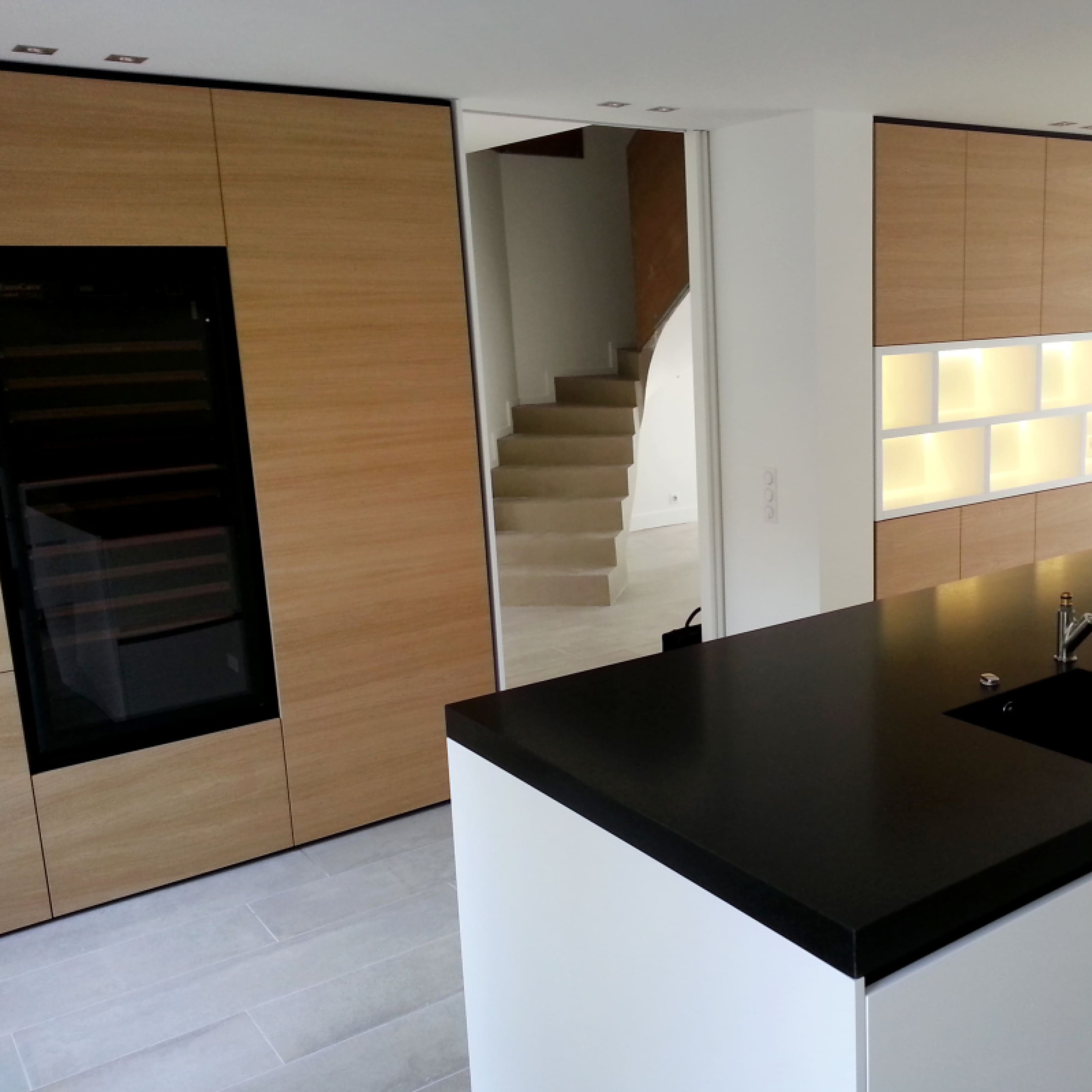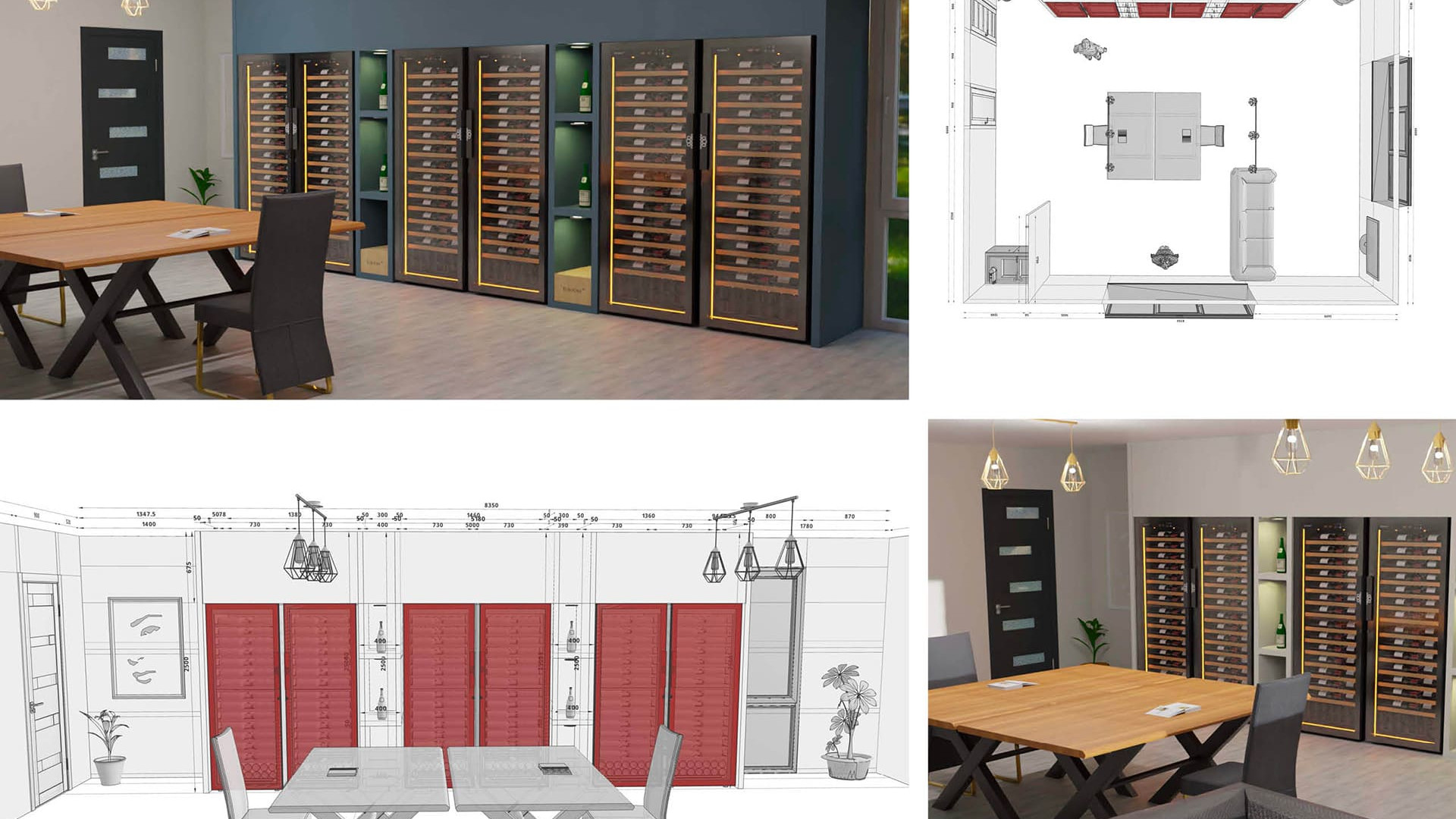Cabinet Conversion Planning & Design

Transforming a kitchen cabinet into a functional and aesthetically pleasing wine rack requires careful planning and consideration of several factors. The success of the project hinges on a thorough assessment of the cabinet’s suitability, a well-defined design, and meticulous execution. This section delves into the critical steps involved in this conversion process.
Cabinet Suitability Assessment
The first step involves a comprehensive evaluation of the kitchen cabinet’s suitability for conversion. This assessment considers three primary aspects: size, material, and structural integrity. Size dictates the potential storage capacity, while material and structural integrity influence the feasibility and longevity of the conversion. Insufficient size or compromised structural integrity can render the project impractical.
| Cabinet Type | Material | Suitability | Modifications Needed |
|---|---|---|---|
| Base Cabinet | Solid Wood | High | Minimal; potentially shelf adjustments |
| Wall Cabinet | Particleboard | Medium | Reinforcement may be required; careful shelf weight consideration |
| Corner Cabinet | MDF | Low | Significant structural modifications; potentially impractical |
| Tall Pantry | Plywood | High | Extensive internal reconfiguration likely needed |
Design Options for Wine Rack Incorporation
Several design options exist for integrating wine racks into existing cabinets, each offering unique advantages in terms of storage capacity, accessibility, and aesthetics. The choice depends on the cabinet’s dimensions, the desired storage capacity, and the overall kitchen design.
Convert kitchen cabinet to wine rack – The following Artikels some common design options:
- Standard Shelf Configuration: Simple, horizontal shelves offer straightforward bottle storage. Suitable for cabinets with ample depth. Capacity is directly proportional to shelf number and spacing.
- Angled Shelves: These shelves utilize gravity to keep bottles secure, maximizing space and showcasing labels. Ideal for smaller cabinets where space is at a premium. Bottle visibility is enhanced.
- Pull-Out Trays: These provide easy access to bottles stored deeper within the cabinet. Requires additional hardware and may be more expensive. Excellent accessibility for deeper cabinets.
- Custom-Built Racks: Offer complete design flexibility to optimize space and integrate with existing cabinet features. More complex to construct but allows for personalized aesthetics and functionality.
Designing a Custom Wine Rack Layout
Creating a custom wine rack layout requires careful consideration of bottle sizes and optimal arrangement for easy access. The following steps guide the design process:
Effective layout planning is crucial for maximizing storage and accessibility.
- Measure the Cabinet: Accurately measure the cabinet’s interior dimensions, including height, width, and depth.
- Determine Bottle Sizes: Identify the types and sizes of wine bottles to be stored. Standard Bordeaux bottles are typically used for initial design calculations.
- Plan Shelf Spacing: Calculate appropriate shelf spacing to accommodate bottle heights and prevent damage. Allow for 1-2 inches between shelves.
- Sketch the Layout: Create a detailed sketch of the wine rack layout, including shelf placement, bottle orientation, and any additional features.
- Refine the Design: Review the design, considering accessibility, aesthetics, and structural integrity. Make adjustments as needed.
Visual Description of a Converted Cabinet Wine Rack
Imagine a base cabinet, originally designed for pantry storage, transformed into a sleek wine storage unit. The cabinet’s interior is lined with rich, dark walnut wood, complementing the kitchen’s existing warm tones. Two levels of angled shelves, constructed from sturdy, clear-coated oak, hold approximately 30 bottles, each bottle nestled securely. Small, discreet LED strip lights are installed beneath each shelf, softly illuminating the wine labels and adding a touch of elegance. Vertical dividers made from brushed stainless steel separate the bottles, preventing them from shifting or tipping. The cabinet’s original doors remain intact, showcasing a simple, frosted glass panel that allows a glimpse of the wine collection within. The entire conversion is seamlessly integrated into the kitchen design, transforming a previously underutilized space into a stylish and functional wine cellar.
Conversion Methods & Techniques

Transforming a kitchen cabinet into a functional wine rack presents a delightful blend of practicality and aesthetic enhancement. The approach chosen significantly impacts the final result, dictating both the ease of construction and the overall quality of the finished product. A careful consideration of the available methods—pre-made kits, custom-built racks, or adaptations of existing shelving—is crucial for achieving a successful conversion.
Comparison of Wine Rack Construction Methods
The selection of a construction method hinges on several factors, including budget, skill level, and desired aesthetic. Each method offers unique advantages and disadvantages. The following table provides a comparative analysis.
| Method | Cost | Difficulty | Durability |
|---|---|---|---|
| Pre-made Kits | Low to Moderate | Low | Moderate |
| Custom-Built Racks | Moderate to High | Moderate to High | High |
| Adapting Existing Shelving | Low | Low to Moderate | Dependent on existing shelving |
Safe Removal of Existing Cabinet Shelves and Hardware
Prior to constructing the wine rack, the existing cabinet components must be carefully removed. This process requires precision to avoid damage to the cabinet structure.
- Begin by emptying the cabinet completely. This prevents accidental damage to the contents and provides unobstructed access to the shelves and hardware.
- Carefully examine the existing shelves and hardware, noting the type of fasteners used (screws, dowels, etc.) and their placement. Photographing the arrangement can be helpful.
- Using the appropriate tools (screwdriver, pliers, etc.), carefully remove the fasteners, working slowly and methodically. If screws are stripped, apply penetrating oil to aid removal.
- Gently remove the shelves, supporting them to prevent damage. If shelves are glued, a putty knife or heat gun may be necessary for careful separation.
- Clean the cabinet interior thoroughly, removing any residual adhesive, dust, or debris. This ensures a clean surface for the new wine rack.
Measuring and Cutting Wood for Custom Wine Rack Shelves, Convert kitchen cabinet to wine rack
Creating custom shelves allows for precise tailoring to the cabinet dimensions and wine bottle sizes. Accurate measurements are paramount.
Standard wine bottles generally measure approximately 3 1/4 inches in diameter and 12 inches in height. Allow for appropriate spacing between bottles (at least 1/2 inch) and between the bottles and the cabinet sides (at least 1 inch). The depth of the shelves should accommodate the bottle diameter plus the spacing. For example, shelves could be approximately 4 inches deep.
Once the measurements are finalized, carefully transfer them to the wood using a pencil and straight edge. A miter saw or hand saw can be used for cutting, ensuring a clean, straight cut. For intricate designs, a jigsaw may be necessary. Always wear appropriate safety equipment, including safety glasses and hearing protection.
A visual representation would show a detailed plan view of the cabinet interior with dimensions marked for shelves, indicating bottle placement and spacing. A side view would show the shelf depth and the relationship to the bottle height.
Securing Wine Rack Shelves and Supports
The stability and longevity of the wine rack depend on the secure attachment of shelves and supports.
Several methods can be employed to secure the shelves, including screws, dowels, or a combination of both. Screws provide strong, direct fastening, while dowels offer a more subtle, aesthetically pleasing joinery. The choice depends on the type of wood and the desired look. For added stability, consider using shelf supports that attach to the cabinet sides, distributing the weight evenly. These supports can be purchased pre-made or custom-built from wood.
Appropriate tools include a drill, screwdriver, measuring tape, level, and wood glue (if using dowels). Pre-drilling pilot holes before screwing into the wood prevents splitting. Ensure screws are appropriately sized for the wood thickness. Always use a level to ensure the shelves are installed horizontally and securely.
Finishing Touches & Considerations: Convert Kitchen Cabinet To Wine Rack

Transforming a kitchen cabinet into a wine rack requires careful attention to detail, extending beyond the structural conversion. The finishing touches significantly impact the aesthetic appeal and longevity of your project, while considerations like ventilation ensure the well-being of your wine collection. Proper planning in these final stages will result in a beautiful and functional addition to your kitchen.
Finishing Options
The final appearance of your wine rack hinges on the chosen finish. Several options exist, each offering a unique aesthetic and level of protection. Staining provides a natural look, enhancing the wood grain. Painting allows for greater creative freedom, enabling you to match existing kitchen décor or create a striking contrast. Applying a protective sealant, regardless of whether you stain or paint, is crucial for safeguarding the wood against moisture and spills.
Staining involves applying a pigmented solution to the wood, allowing it to penetrate and color the fibers. The process typically involves sanding the wood smooth, applying a stain with a brush or rag, wiping away excess stain, and allowing it to dry completely. Multiple coats may be needed for deeper color saturation. Painting, on the other hand, provides a more opaque finish, completely covering the wood grain. Preparation involves sanding and priming the wood before applying several coats of paint, allowing each coat to dry thoroughly before the next application. A protective sealant, such as polyurethane or varnish, forms a durable barrier against moisture, spills, and scratches. This is applied after the stain or paint has completely dried, using a brush or sprayer, and left to cure according to the manufacturer’s instructions.
Ventilation for Wine Storage
Proper ventilation is paramount in preventing mold and mildew growth within the converted wine rack. Stagnant air can lead to the development of these damaging organisms, affecting both the structural integrity of the cabinet and the quality of your wine. Ensuring adequate airflow involves several strategies. Creating small gaps or vents at the top and bottom of the cabinet allows for natural air circulation. If the cabinet is enclosed, consider adding small ventilation holes, strategically placed to avoid disrupting the aesthetics of the design. For larger cabinets, a small fan could be incorporated to enhance air circulation. Remember to avoid direct sunlight or excessive heat, as these can negatively impact wine storage.
Tools and Materials
A successful kitchen cabinet wine rack conversion necessitates the appropriate tools and materials. Careful planning in this area will streamline the process and ensure a high-quality outcome.
- Measuring tape and pencil
- Screwdriver (Phillips and flathead)
- Drill with various drill bits
- Safety glasses and work gloves
- Wood saw (hand saw or circular saw)
- Sandpaper (various grits)
- Wood filler
- Putty knife
- Stain or paint (and primer if painting)
- Paintbrushes or rollers
- Protective sealant (polyurethane or varnish)
- Cabinet hardware (hinges, knobs, etc.)
- Wood screws
- Wine rack dividers or shelves (pre-made or custom-cut)
Rewritten Article: A Human-Centered Approach
Converting a kitchen cabinet into a wine rack is a rewarding DIY project that blends practicality with style. The process involves careful planning, precise execution, and a keen eye for detail. First, measure your cabinet precisely and design a wine rack layout that maximizes space and accommodates your collection. This might involve removing shelves or adjusting existing ones to create optimal bottle storage. Consider using readily available wine rack dividers or building custom shelves for a truly personalized touch. Securely attach your new racking system, ensuring stability and durability. Once the structural conversion is complete, the fun part begins – choosing a finish that complements your kitchen’s aesthetic. Staining enhances the wood’s natural beauty, while painting allows for a broader range of colors and styles. Regardless of your choice, always apply a protective sealant to guard against moisture and spills. Finally, remember the importance of ventilation to prevent mold and mildew. Small vents or a discreet fan can ensure your wine remains in optimal condition. With careful planning and attention to detail, you can transform an ordinary cabinet into a beautiful and functional wine storage solution.
